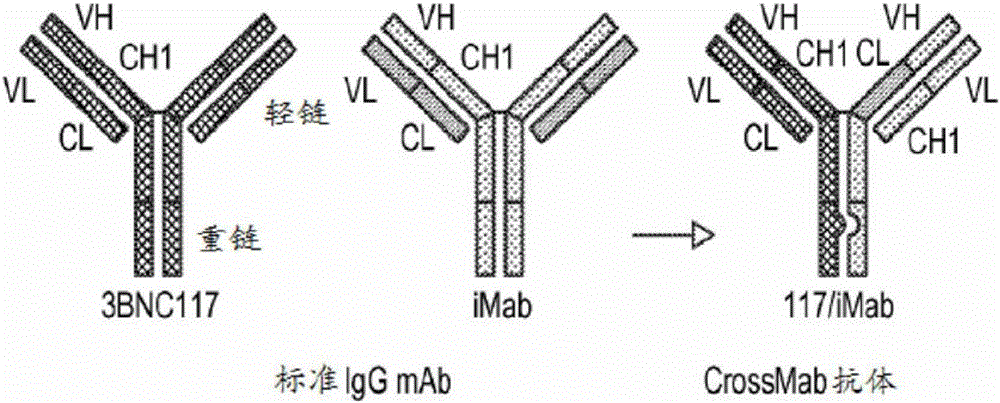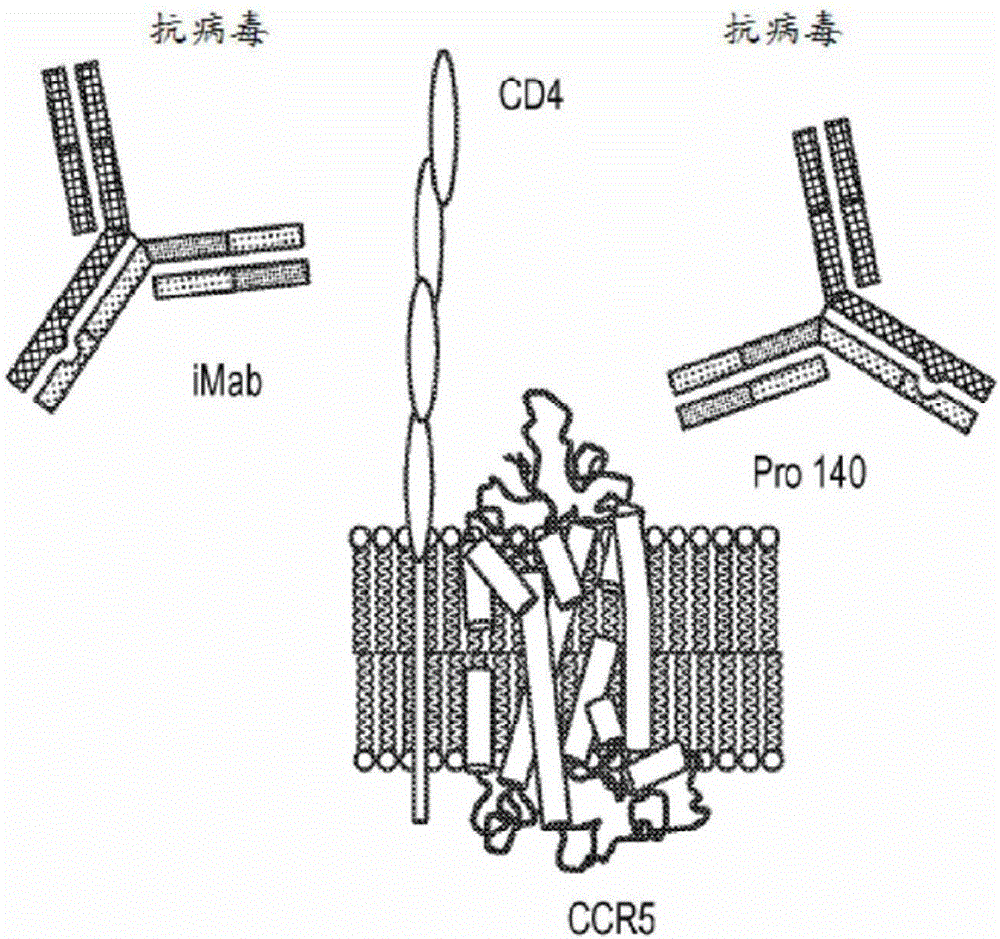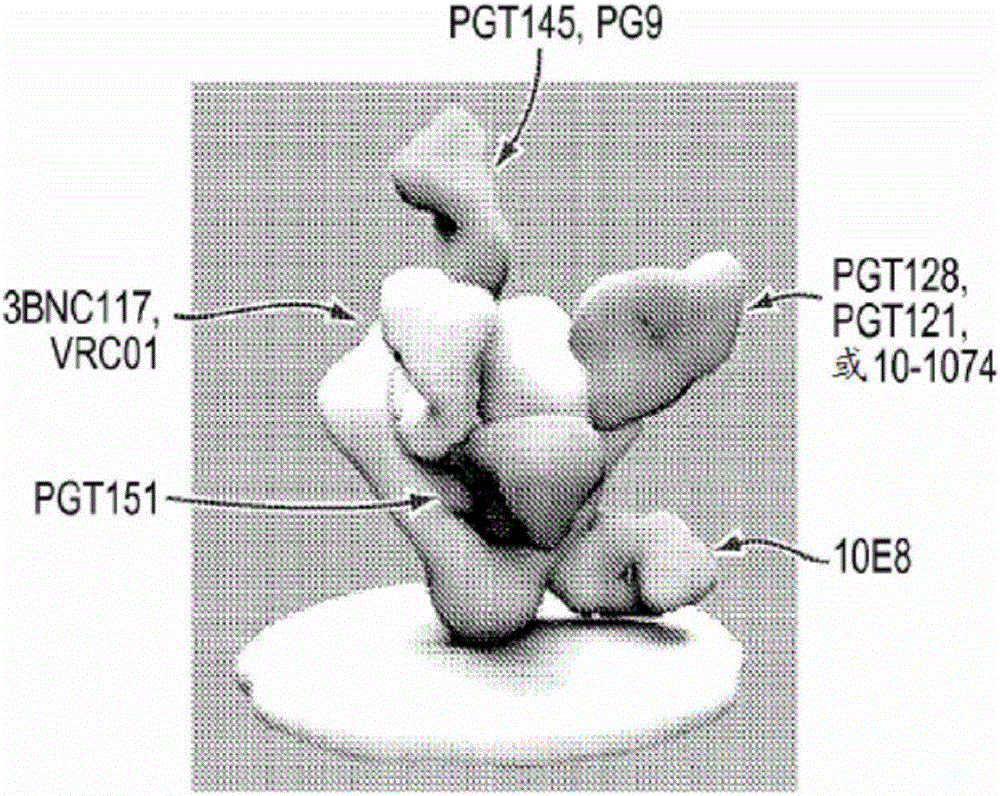Improved HIV-1-neutralizing antibody potency and breadth via cell receptor anchoring using bispecific antibodies with native architecture
A bispecific antibody and antibody technology, applied in the direction of antibodies, specific peptides, antiviral agents, etc., can solve problems such as the accessibility of unknown HIV envelope epitopes
- Summary
- Abstract
- Description
- Claims
- Application Information
AI Technical Summary
Problems solved by technology
Method used
Image
Examples
Embodiment Construction
[0050] Embodiments of the invention provide inhibition of HIV. In various implementations, bispecific antibodies are formed, each comprising heavy and light chain components from two different parental antibodies. One parent antibody specifically binds HIV, eg the HIV envelope protein Env. The other parent antibody specifically binds cell membrane proteins such as CD4 and CCR5. In a bispecific antibody, the heavy and light chains of each antibody from two parental antibodies are combined, thereby providing an antibody in which fragment antigen-binding 1 (Fab1) and Fab2 have different binding specificities. In certain embodiments, the bispecific antibody is such as figure 1 Antibodies in CrossMab format as indicated. In the CrossMab format, one heavy chain includes a "knob" structure and the other includes a corresponding "hole" structure, and the positions of the constant domains (i.e., CL and CH1) from one parental antibody switch, together ensuring the correct pairing of...
PUM
 Login to View More
Login to View More Abstract
Description
Claims
Application Information
 Login to View More
Login to View More - R&D
- Intellectual Property
- Life Sciences
- Materials
- Tech Scout
- Unparalleled Data Quality
- Higher Quality Content
- 60% Fewer Hallucinations
Browse by: Latest US Patents, China's latest patents, Technical Efficacy Thesaurus, Application Domain, Technology Topic, Popular Technical Reports.
© 2025 PatSnap. All rights reserved.Legal|Privacy policy|Modern Slavery Act Transparency Statement|Sitemap|About US| Contact US: help@patsnap.com



